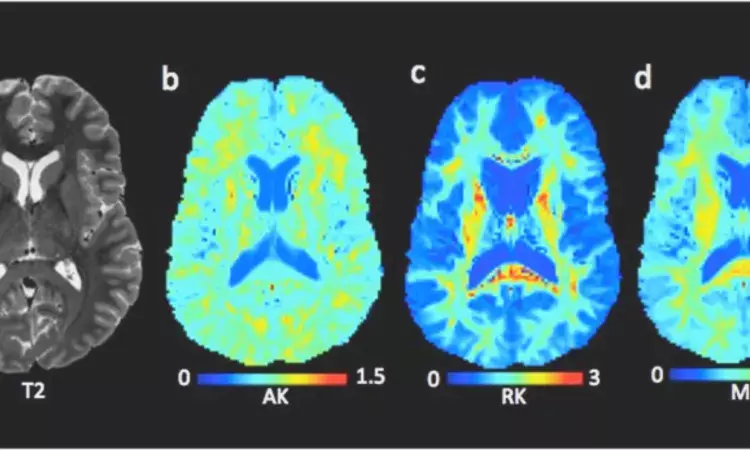- Home
- Medical news & Guidelines
- Anesthesiology
- Cardiology and CTVS
- Critical Care
- Dentistry
- Dermatology
- Diabetes and Endocrinology
- ENT
- Gastroenterology
- Medicine
- Nephrology
- Neurology
- Obstretics-Gynaecology
- Oncology
- Ophthalmology
- Orthopaedics
- Pediatrics-Neonatology
- Psychiatry
- Pulmonology
- Radiology
- Surgery
- Urology
- Laboratory Medicine
- Diet
- Nursing
- Paramedical
- Physiotherapy
- Health news
- Fact Check
- Bone Health Fact Check
- Brain Health Fact Check
- Cancer Related Fact Check
- Child Care Fact Check
- Dental and oral health fact check
- Diabetes and metabolic health fact check
- Diet and Nutrition Fact Check
- Eye and ENT Care Fact Check
- Fitness fact check
- Gut health fact check
- Heart health fact check
- Kidney health fact check
- Medical education fact check
- Men's health fact check
- Respiratory fact check
- Skin and hair care fact check
- Vaccine and Immunization fact check
- Women's health fact check
- AYUSH
- State News
- Andaman and Nicobar Islands
- Andhra Pradesh
- Arunachal Pradesh
- Assam
- Bihar
- Chandigarh
- Chattisgarh
- Dadra and Nagar Haveli
- Daman and Diu
- Delhi
- Goa
- Gujarat
- Haryana
- Himachal Pradesh
- Jammu & Kashmir
- Jharkhand
- Karnataka
- Kerala
- Ladakh
- Lakshadweep
- Madhya Pradesh
- Maharashtra
- Manipur
- Meghalaya
- Mizoram
- Nagaland
- Odisha
- Puducherry
- Punjab
- Rajasthan
- Sikkim
- Tamil Nadu
- Telangana
- Tripura
- Uttar Pradesh
- Uttrakhand
- West Bengal
- Medical Education
- Industry
Diffusion kurtosis imaging can identify cognitive impairment in occupational aluminum workers: Study

China: The diffusion kurtosis imaging (DKI) method is promising for diagnosing mild cognitive impairment (MCI) in aluminum (Al)-exposed workers, researchers state in a study published in Academic Radiology.
"The DKI method could be a sensitive imaging biomarker for discriminating MCI from normal controls and could preliminarily examine the severity of cognitive impairment in individuals exposed to aluminum," the researchers wrote in their study. "Mean kurtosis (MK) in the right hippocampus appeared to be the best independent predictor."
Mild cognitive impairment is a transitional stage between normal ageing and dementia, which can result in diseases such as Alzheimer's. Interventional measurements during the MCI phase may slow or stop the progression to Alzheimer's; however, diagnosing MCI is of great significance for delaying dementia's onset and progression.
Diffusion kurtosis imaging extends diffusion tensor imaging and can identify the brain's small structural changes before conventional MRI can discern them. Previous studies have shown that aluminum accumulation in the brain is linked with mild cognitive impairment. DKI's efficacy for MCI evaluation among people exposed to environmental toxins is still being determined.
Wenji Xu, Shanxi Medical University in Taiyuan, China, and colleagues aimed to investigate whether diffusion kurtosis imaging can distinguish MCI from normal controls in workers exposed to aluminum, and they also explored the association of DKI with plasma Al concentration and cognitive performance.
The researchers enrolled 28 patients with mild cognitive impairment and 25 normal controls. All participants underwent conventional MRI and DKI scans. They measured the mean diffusivity (MD), radial kurtosis (Kr), fractional anisotropy (FA), axial kurtosis (Ka), and mean kurtosis (MK) parameters of the hippocampus, red nucleus, substantia nigra, anterior cingulate gyrus, thalamus, genu and crus of the corpus callosum, parietal, frontal, and temporal lobe. The Mann-Whitney rank sum test was used between the two groups to compare the parameters.
Key findings include:
· Compared with the NC group, the Ka, FA, MK, and Kr values in the MCI group were remarkably decreased, and the MD values were significantly increased.
· For the MCI diagnosis, mean kurtosis in the right hippocampus showed the largest AUC (0.924).
· The Kr, MK, FA, and MD values corresponded with the Montreal Cognitive Assessment (MoCA) scores. MK values in the right hippocampus demonstrated the most significant correlation with MoCA scores (r=0.744).
· In the MCI group, plasma Al was higher than that in the NC group, although between the two groups, there was no remarkable difference in plasma Al.
· The authors did not find any correlation between DKI parameters and plasma Al.
The mechanism of cognitive decline is a critical content of aluminum exposure research. "The findings indicate that the DKI technique could provide valuable information for MCI diagnosis," the team concluded.
Reference:
The study titled "Diffusion Kurtosis Imaging in Evaluating the Mild Cognitive Impairment of Occupational Aluminum Workers" was published in Academic Radiology.
DOI: https://doi.org/10.1016/j.acra.2022.12.003
Dr Kamal Kant Kohli-MBBS, DTCD- a chest specialist with more than 30 years of practice and a flair for writing clinical articles, Dr Kamal Kant Kohli joined Medical Dialogues as a Chief Editor of Medical News. Besides writing articles, as an editor, he proofreads and verifies all the medical content published on Medical Dialogues including those coming from journals, studies,medical conferences,guidelines etc. Email: drkohli@medicaldialogues.in. Contact no. 011-43720751


